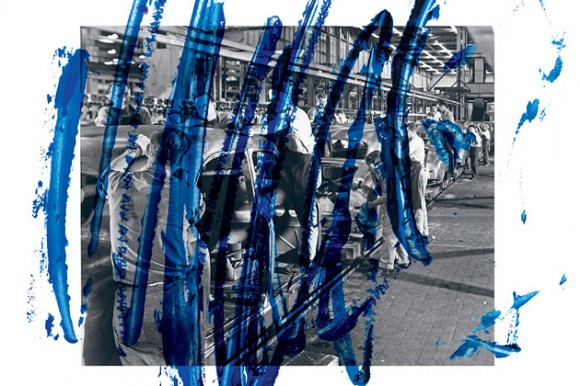 In the runup to this year’s State of the Union address, President Obama has been busy trying to fulfill pledges from last year’s. He went to Raleigh, N.C., to announce it would become a high-tech manufacturing hub to ensure that the U.S. attracts “the good, high-tech manufacturing jobs that a growing middle class requires.”
In the runup to this year’s State of the Union address, President Obama has been busy trying to fulfill pledges from last year’s. He went to Raleigh, N.C., to announce it would become a high-tech manufacturing hub to ensure that the U.S. attracts “the good, high-tech manufacturing jobs that a growing middle class requires.”
The president is one of many politicians of both parties as well as pundits who think manufacturing deserves special treatment. But this factory obsession is based on flawed economics. As the Brookings Institute economist Justin Wolfers asked recently, “What’s with the political fetish for manufacturing? Are factories really so awesome?”
Not really—at least not for the U.S. in 2014. Any attempt to draw lessons from the 1950s, when many a high school-educated (white, male) person got a job in a factory and joined the middle class, doesn’t account for the changes in the U.S. and global economy since the middle of the last century. While it’s smart to focus on creating more stable, remunerative jobs, few of them are likely to come from manufacturing.
In 1953 manufacturing accounted for 28 percent of U.S. gross domestic product, according to the U.S. Bureau of Economic Analysis. By 1980 that had dropped to 20 percent, and it reached 12 percent in 2012. Over that time, U.S. GDP increased from $2.6 trillion to $15.5 trillion, which means that absolute manufacturing output more than tripled in 60 years. Those goods were produced by fewer people. According to the Bureau of Labor Statistics, the number of employees in manufacturing was 16 million in 1953 (about a third of total nonfarm employment), 19 million in 1980 (about a fifth of nonfarm employment), and 12 million in 2012 (about a tenth of nonfarm employment).
Service industries—hotels, hospitals, media, and accounting—have taken up the slack. Even much of the value generated by U.S. manufacturing involves service work—about a third of the total. More than half of all people still employed in the U.S. manufacturing sector work in such services as management, technical support, and sales.
Over the past 30 years, manufacturers have spent more on labor-saving machinery and hired fewer but more skilled workers to run it. From 1980 to 2012 across the whole economy, output per hour worked increased 85 percent. In manufacturing output per hour climbed 189 percent. The proportion of manufacturing workers with some college education has increased from one-fifth to one-half since 1969.
Across richer countries, growth has been accompanied by a decline in the number of manufacturing jobs and the rise of service jobs. Some of the richer countries, such as France, that have seen the slowest decline in manufacturing’s share of employment have actually suffered some of the most sluggish growth. In the U.S., Eric Fisher of the Federal Reserve Bank of Cleveland suggests that those states where the shift from manufacturing employment has been the most rapid are those where wages have climbed the fastest.
Developing countries have taken over much of the low-skilled, low-capital production once done in the U.S.: Consider the garment industry or tire manufacturing. Such low-tech work is even more mind-numbing and poorly paid than it was when the work was done in the U.S. through the 1970s. Many of the workers killed in the recent Rana Plaza garment factory collapse in Bangladesh earned just $3 a day. Some politicians have regretted the loss of similar jobs in the U.S. The question is: Do we want such jobs here now?
Shutting the borders to low-cost imports in the hope of reviving low-skilled manufacturing employment at home would likely kill jobs, not save them. When Obama in 2009 slapped tariffs on Chinese tire imports that had flooded the U.S. market, he temporarily preserved 1,200 jobs in the tire industry as supplies tightened and U.S. tiremakers helped make up the difference. But the impact on the U.S. labor force as a whole was negative. Gary Hufbauer of the Peterson Institute estimates that the cost to U.S. consumers was more than $1 billion. As tires got more expensive, tire buyers had less money to spend on other goods. The effect of that drop in demand on retail employment was a loss of 3,731 jobs, three times the number preserved in the tire industry.
Champions of reindustrialization often cite the cluster effect as a reason to back manufacturing. If a company builds a factory, then other factories will pop up in the same place to benefit from the industry knowledge and experienced workforce found there. If that theory were strongly supported by the facts, that might be a reason for governments to subsidize early investors in building the first plant somewhere. But work by economists Glenn Ellison of Massachusetts Institute of Technology and Ed Glaeser of Harvard suggests that while “slight concentration is widespread” among industries, “extreme concentration” is the exception. High levels of concentration aren’t a particularly common or unique feature of high-tech manufacturers (although high-tech service industries cluster in Silicon Valley). In manufacturing, the two economists suggest clustering is most evident in fur, wines, hosiery, oil and gas, carpets and rugs, sawmills, and costume jewelry.
Read more here.
